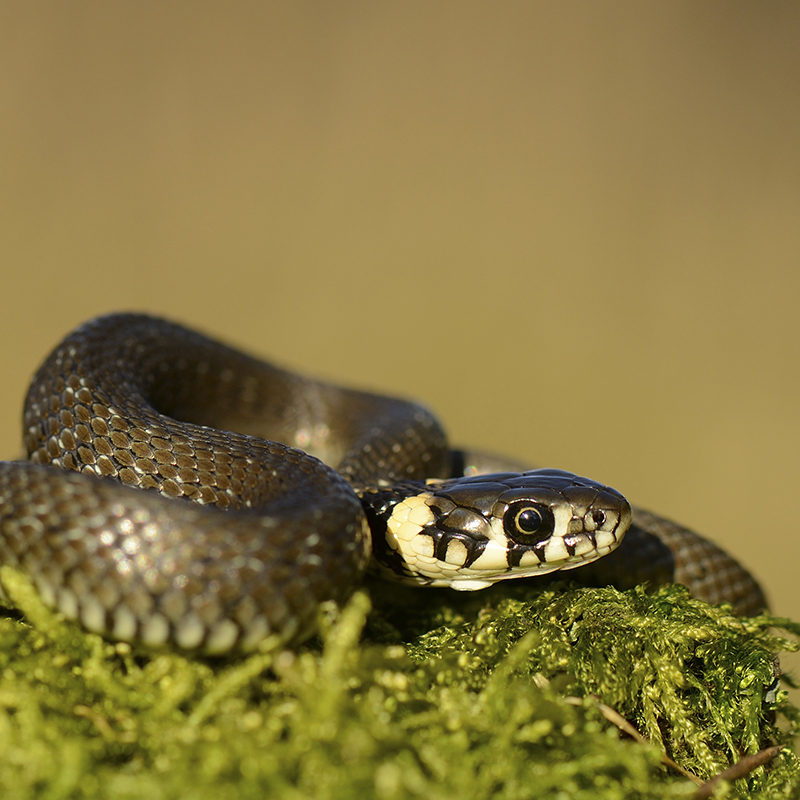Grass Snake
Natrix helvetica
The longest snake species in Great Britain, the grass snake is often found near waterbodies. Grass snakes are usually olive green in colour, with a distinctive yellow and black neck collar and a round pupil. These reptiles have pale bellies and dark blotches or bars can be found along the body.
The grass snake is Britain’s only egg-laying snake with the female laying 10 to 40 eggs in decaying vegetation such as compost heaps which act as an incubator. The eggs hatch into miniature versions of the adults in late summer to autumn.
The grass snake is completely harmless to humans, but when threatened they can play dead, or rear up in a mock attack posture. They can also excrete a foul-smelling substance from anal glands. Like all snakes, grass snakes are cold-blooded and can only be active if they bask in the sun on warm days.
What they eat
Grass snakes feed on a variety of species including amphibians, fish and nesting birds.
Where and when to see them
Grass snakes are active from April to October (they hibernate from October to April).
They are strongly associated with wetland habitats but can also be found on grasslands, heaths and gardens (particularly those with a pond).
Check compost heaps as they like to lay their eggs in the warm and rotting organic matter.
Search for them on warm sunny days. On cold wet days they will be will be hidden away.














